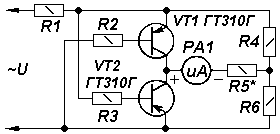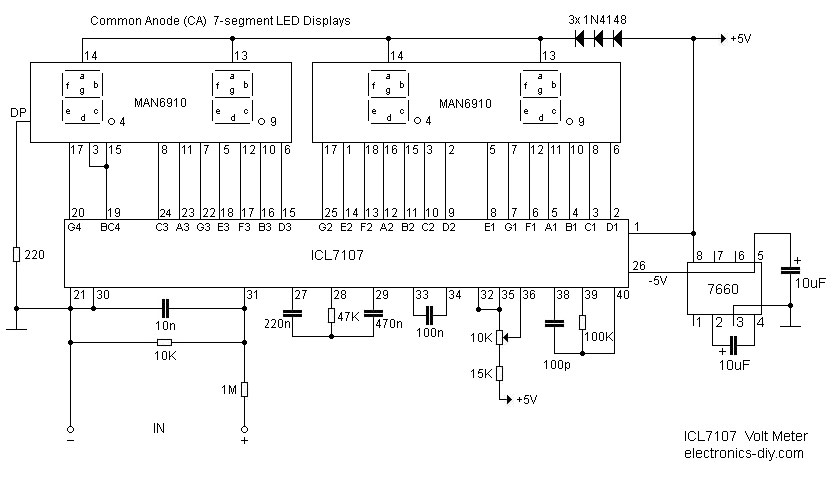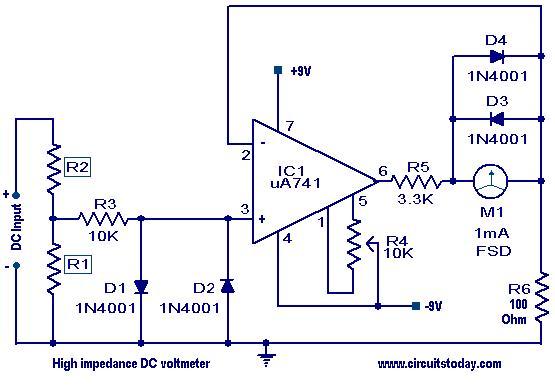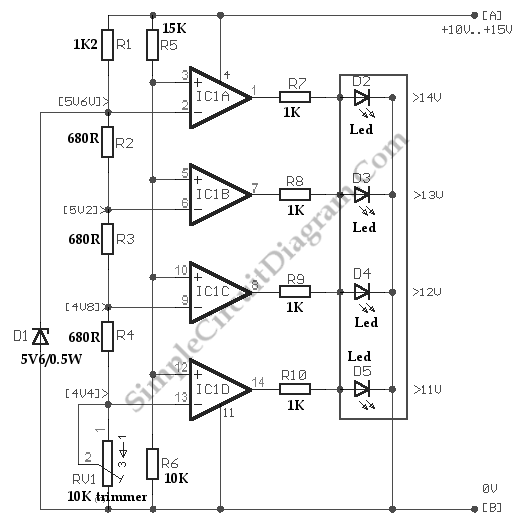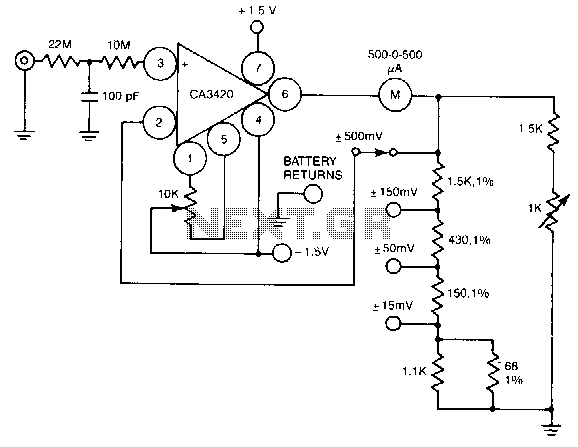
Voltmeter
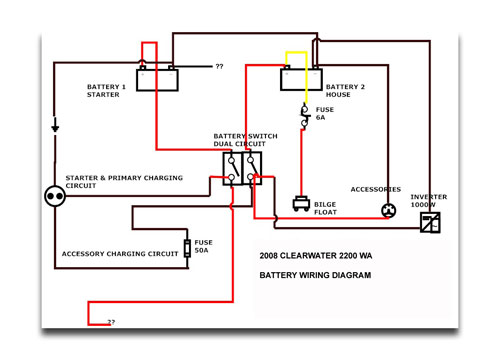
If the instruments have power when the key is turned on, the next step is to check the neutral safety switch. According to standard boat wiring colors, follow the yellow/red wire from the starter post on the key switch to the neutral safety switch located in the shifter control. Utilizing a voltmeter or a test light can help identify the problem, which might be as simple as adjusting the shifter or replacing the starter solenoid. The boat has a two-battery configuration: one for starting and another serving as the house battery for electronics. Both batteries are connected through a dual circuit marine battery switch (5511e) and are charged via isolated leads from the outboard motor, which features an accessory charging lead in addition to the primary lead for the starting circuit. Recently, the motor could not start due to a discharged starting battery after the boat had been stationary for several days. Switching to combine mode allowed the motor to start and run without issues. Two questions arise: Is there a problem with the boat battery wiring or charging circuit? Will this circuit accommodate a battery charger if the boat battery switch is in the off position? The dual circuit PLUS battery switch is a key component of this marine electrical system. It is suspected that the dead battery issue may be linked to a device connected to a mystery red lead associated with the starting battery at the switch, likely a stereo memory wire or similar device. With the switch off, a dual output battery charger or manual connection to each battery is advised. For a dual output charger installation, it is recommended to connect the battery at the switch and the ground bus rather than directly at the battery terminals to avoid confusion and loose connections. There are ongoing starting issues with the starting battery, as the motor does not turn fast enough after sitting overnight. When the selector switch is set to COMBINE, the motor starts without difficulty. The mystery red wire at the switch is not believed to drain the battery since the switch remains off overnight. A digital voltmeter should be used to check the starter voltage while attempting to start the engine, first with the battery switch on and then in combine mode. Potential issues may include a bad ground cable or corroded battery lug connection. Although shrink tube-covered cable connections are beneficial, they can conceal bad connections. The boat in question is a 1989 Four Winns Liberator 201 with a 350 OMC motor. Recently, navigation lights failed to turn on, but they activate when the horn is pressed, turning off once the horn is released. This could indicate a bad ground or short in the wiring. Upon inspection, it was found that previous modifications involved cut and spliced wires, some disconnected and zip-tied, while others were simply cut. The boat blower motor initially functioned but now does not operate. Although not an expert in marine electrical systems, there is a desire to troubleshoot the issues independently. A voltmeter is available, though it has been used primarily for checking glow plug relays on diesel engines. Previous experience includes using a test light on trailers to check for power. An electric start kit, which includes the starter motor, solenoid, internal harness, and choke solenoid, was purchased and has been stored for a year. Recently, an external harness was acquired.
The described electrical system features a two-battery setup, which is common in marine applications to ensure reliable starting and power for onboard electronics. The dual circuit marine battery switch (model 5511e) allows for flexible battery management, enabling the operator to select between starting, house, or combined battery use. This configuration is crucial for maintaining power to essential systems while preventing battery drain during periods of inactivity.
The neutral safety switch plays a vital role in preventing the engine from starting unless the transmission is in neutral or park, thus ensuring operational safety. Troubleshooting should begin at this switch, as continuity tests can confirm its operational status. Following the yellow/red wire to the switch can help isolate any wiring issues.
The presence of a mystery red wire raises concerns about potential parasitic drains on the starting battery. It is advisable to trace this wire to determine its purpose and assess whether it is connected to a device that draws current when the battery switch is off. If it is indeed a memory wire for a stereo or similar device, it may require a dedicated connection to prevent battery drain.
When testing the starting system, it is essential to measure voltage at the starter while attempting to crank the engine. A significant drop in voltage could indicate either a weak battery, poor connections, or an inadequate ground. Corroded terminals and loose connections are common culprits in marine environments and should be inspected thoroughly.
The malfunctioning navigation lights and blower motor suggest additional wiring issues, especially considering the history of spliced and cut wires. A systematic approach to inspection and testing of each circuit is recommended. Utilizing the voltmeter to check for voltage at various points along the circuit will help identify where the power loss occurs.
In summary, addressing the electrical challenges in this marine system will require a methodical approach to troubleshooting, focusing on the battery connections, neutral safety switch, and any modifications made to the wiring. Proper diagnosis will ensure the safe and reliable operation of the boat's electrical systems.If the instruments have power when you turn on the key, then I would check the neutral safety switch. Based on Standard Boat Wiring Colors, follow the yellow/red wire from the starter post on the key switch to the neutral safety switch in the shifter control.
If you use a voltmeter or a test light, you will be able to find the problem. It may be something as simple as wiggle the shifter a little or replacing the starter solenoid. I have a two battery configuration where one is used for starting and the other is the house battery for electronics and the like. I have both boat batteries connected via a dual circuit marine battery switch (5511e) and both batteries are charged via isolated leads from the outboard since this outboard provides an accessory charging lead in addition to the primary lead to the starting circuit.
The other day, I could not start the motor because of a discharged starting battery after the boat had sat for several days. I switched to the combine mode and the motor started. Ran all day with no issues. Two questions, please: Is there a problem with the boat battery wiring or charging circuit Will this circuit accommodate a battery charger if the boat battery switch is in the off position This is a great marine electrical system and the dual circuit PLUS battery switch is one of the key components.
My best guess on the dead battery would be the device that is connected to the mystery red lead connected to your starting battery (at the switch). It is probably a stereo memory wire or some type of memory device. With the switch in the off position, you will need to use a dual output battery charger or manually connect your charger to one battery and then to the other.
If you are installing a dual output charger, I strongly recommend connecting the battery at the switch and your ground bus and not at the battery. Too many battery connections become confusing and the mix of small and large wires on the terminals always causes a loose connection.
Still having trouble starting the motor with the starting battery. Now sits overnight and unable to start a cold motor in the morning. Does not seem to turn fast enough. When the selector switch is set at COMBINE, starts right up. The mystery red wire you refer to is at the switch and I don`t think it could drain the battery since the switch is in the OFF position overnight. Using a digital voltmeter, look at the starter voltage while trying to start your cold engine. Try it with the battery switch in the on position first and then the combine. It could be something as simple as a bad ground cable or corroded battery lug connection. Shrink tube covered cable connections are great but they can also hind bad connections. I have a 1989 Four Winns Liberator 201 with a 350 OMC motor. I know that it`s early, but I pulled off the boat covers today because I wanted to check everything before I put her back in the water.
Next the navigation lights would not turn on. But when I hit the horn, the lights will turn on until the horn is released then they go off. Not sure if it could be a bad ground or short in the wiring. I removed the access cover and found someone has cut and spliced wires on the boat before. There are also some wires disconnected and zip tied up and others just cut. The boat blower motor did work when starting the boat but now it also will not turn on. I`m not an expert in marine electrical by any means but would like to find the issue my self. I have a voltmeter but never used it other than checking glow plug relays on diesel engines. I have used a test light on trailers checking for power and such so I do have a little knowledge but not where to start on this project. Last year I came across an electric start kit that included the starter motor, solenoid, internal harness and choke solenoid and purchased it and then let it sit in its box for a year.
About a month ago I picked up an external harness 🔗 External reference
The described electrical system features a two-battery setup, which is common in marine applications to ensure reliable starting and power for onboard electronics. The dual circuit marine battery switch (model 5511e) allows for flexible battery management, enabling the operator to select between starting, house, or combined battery use. This configuration is crucial for maintaining power to essential systems while preventing battery drain during periods of inactivity.
The neutral safety switch plays a vital role in preventing the engine from starting unless the transmission is in neutral or park, thus ensuring operational safety. Troubleshooting should begin at this switch, as continuity tests can confirm its operational status. Following the yellow/red wire to the switch can help isolate any wiring issues.
The presence of a mystery red wire raises concerns about potential parasitic drains on the starting battery. It is advisable to trace this wire to determine its purpose and assess whether it is connected to a device that draws current when the battery switch is off. If it is indeed a memory wire for a stereo or similar device, it may require a dedicated connection to prevent battery drain.
When testing the starting system, it is essential to measure voltage at the starter while attempting to crank the engine. A significant drop in voltage could indicate either a weak battery, poor connections, or an inadequate ground. Corroded terminals and loose connections are common culprits in marine environments and should be inspected thoroughly.
The malfunctioning navigation lights and blower motor suggest additional wiring issues, especially considering the history of spliced and cut wires. A systematic approach to inspection and testing of each circuit is recommended. Utilizing the voltmeter to check for voltage at various points along the circuit will help identify where the power loss occurs.
In summary, addressing the electrical challenges in this marine system will require a methodical approach to troubleshooting, focusing on the battery connections, neutral safety switch, and any modifications made to the wiring. Proper diagnosis will ensure the safe and reliable operation of the boat's electrical systems.If the instruments have power when you turn on the key, then I would check the neutral safety switch. Based on Standard Boat Wiring Colors, follow the yellow/red wire from the starter post on the key switch to the neutral safety switch in the shifter control.
If you use a voltmeter or a test light, you will be able to find the problem. It may be something as simple as wiggle the shifter a little or replacing the starter solenoid. I have a two battery configuration where one is used for starting and the other is the house battery for electronics and the like. I have both boat batteries connected via a dual circuit marine battery switch (5511e) and both batteries are charged via isolated leads from the outboard since this outboard provides an accessory charging lead in addition to the primary lead to the starting circuit.
The other day, I could not start the motor because of a discharged starting battery after the boat had sat for several days. I switched to the combine mode and the motor started. Ran all day with no issues. Two questions, please: Is there a problem with the boat battery wiring or charging circuit Will this circuit accommodate a battery charger if the boat battery switch is in the off position This is a great marine electrical system and the dual circuit PLUS battery switch is one of the key components.
My best guess on the dead battery would be the device that is connected to the mystery red lead connected to your starting battery (at the switch). It is probably a stereo memory wire or some type of memory device. With the switch in the off position, you will need to use a dual output battery charger or manually connect your charger to one battery and then to the other.
If you are installing a dual output charger, I strongly recommend connecting the battery at the switch and your ground bus and not at the battery. Too many battery connections become confusing and the mix of small and large wires on the terminals always causes a loose connection.
Still having trouble starting the motor with the starting battery. Now sits overnight and unable to start a cold motor in the morning. Does not seem to turn fast enough. When the selector switch is set at COMBINE, starts right up. The mystery red wire you refer to is at the switch and I don`t think it could drain the battery since the switch is in the OFF position overnight. Using a digital voltmeter, look at the starter voltage while trying to start your cold engine. Try it with the battery switch in the on position first and then the combine. It could be something as simple as a bad ground cable or corroded battery lug connection. Shrink tube covered cable connections are great but they can also hind bad connections. I have a 1989 Four Winns Liberator 201 with a 350 OMC motor. I know that it`s early, but I pulled off the boat covers today because I wanted to check everything before I put her back in the water.
Next the navigation lights would not turn on. But when I hit the horn, the lights will turn on until the horn is released then they go off. Not sure if it could be a bad ground or short in the wiring. I removed the access cover and found someone has cut and spliced wires on the boat before. There are also some wires disconnected and zip tied up and others just cut. The boat blower motor did work when starting the boat but now it also will not turn on. I`m not an expert in marine electrical by any means but would like to find the issue my self. I have a voltmeter but never used it other than checking glow plug relays on diesel engines. I have used a test light on trailers checking for power and such so I do have a little knowledge but not where to start on this project. Last year I came across an electric start kit that included the starter motor, solenoid, internal harness and choke solenoid and purchased it and then let it sit in its box for a year.
About a month ago I picked up an external harness 🔗 External reference
